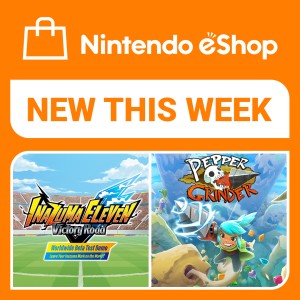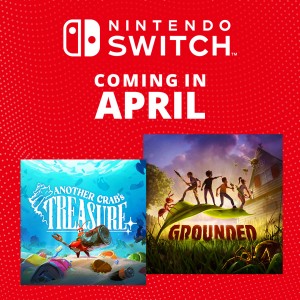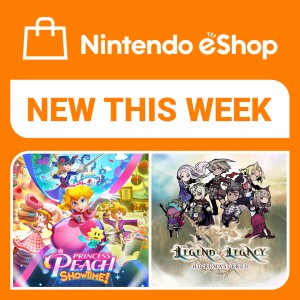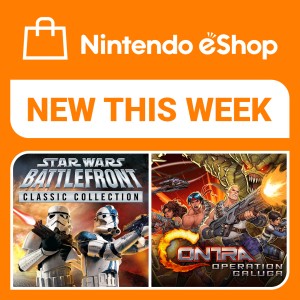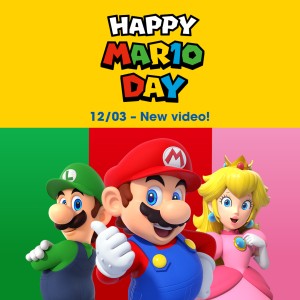Learn all about Pokémon Sun and Pokémon Moon in our in-depth interview
26/10/2016
A new adventure awaits in the Alola region when Pokémon Sun and Pokémon Moon arrive exclusively on Nintendo 3DS family systems on November 23rd. In the first part of our Pokémon Sun and Pokémon Moon interview, Shigeru Ohmori, the game’s director, and Junichi Masuda, the game’s producer, took sides on some hard-hitting Pokémon dilemmas. In the second part of our interview, we ask them how they create new Pokémon, how Hawaii inspired the all-new Alola region and what players can expect from these brand new games.

Shigeru Ohmori (pictured left) and Junichi Masuda (pictured right)
Nintendo of Europe: Thank you both for joining us today. There are some Pokémon appearing in Pokémon Sun and Pokémon Moon that are regional variants of Pokémon from past games. How did you go about coming up with the Alolan forms of these familiar Pokémon?

Shigeru Ohmori: As we're commemorating 20 years of Pokémon, we wanted to go and rethink the previous Pokémon from Pokémon Red Version, Pokémon Blue Version and Pokémon Yellow Version: Special Pikachu Edition. We wanted to look at them as real living creatures and think, perhaps if they had been moved over and lived in the Alola region where there’s lots of sunlight, how would they have changed? For example, with Exeggutor, there is a lot of sunlight so its neck gets really long – that kind of thing! We wanted to think about how we could make these Pokémon appropriate to this new location.
NoE: As the series has progressed, the Pokémon themselves have become more animated, lively and expressive. How has this changed with Pokémon Sun and Pokémon Moon?
SO: With Pokémon X and Pokémon Y, it was the first time we used full 3D models for all the Pokémon. This is something we looked into, and we thought about how we could make this even more interesting. One thing that the designers came up with was to focus on the motions of the Pokémon themselves. One example is the first-partner Pokémon Rowlet – it’s an owl-like creature, so obviously you’ve got the head that twists round and round. That type of thing is what we wanted to focus on here.
NoE: Where do you draw your inspiration from when coming up with ideas for new Pokémon?
SO: It depends on the Pokémon. The approach for a Legendary Pokémon, for example, might be completely different to other Pokémon. We also look at the region. We’ve gone for Hawaii this time, so we thought, “What would be a good Pokémon that would appear here?”, or for regional variants of a pre-existing Pokémon, “What would it be like if it lived here?” Obviously, all the people in the design process come up with different ideas. We talk them out, everyone puts their ideas on paper and eventually we settle on the new Pokémon that we’re going to introduce. This combination of ideas is an important role.
NoE: Do you have any favourites from the Pokémon introduced in Pokémon Sun and Pokémon Moon?
Junichi Masuda: My favourite is the Alolan Exeggutor with the really long neck. I think he looks quite cool like that.

OS: I like Rockruff. It’s like a little dog and it looks really cute, like something that people could live with and get on with in everyday life. I think we managed to capture that essence in Rockruff.
NoE: Of course, the Alola region is very obviously inspired by Hawaii. Why did you choose Hawaii as your main source of inspiration for this new region?
SO: When we were coming up with ideas for the titles Pokémon Sun and Pokémon Moon, what we thought of was this idea of life. For example, the sun and the moon, both being important to all life on earth. So we thought, “Where is an area where both of these are visible and have a big influence?” A place that came to mind was Hawaii. It’s obviously an area with lots of sunshine, which everyone likes, but it also has clear nights where you can see the moon in the sky. It’s a really beautiful place! It was interesting to think what Pokémon might live in an area like this. That was an inspirational place for us when we were thinking about the region for these games.
JM: As we're commemorating 20 years of Pokémon, we wanted to look at and think of the Trainers and the Pokémon as living things and express that in a better way. We looked at a place where this idea of life is really abundant and Hawaii came to mind as a great place to reflect that.

NoE: Speaking of the new setting, we’ve noticed that the characters themselves look and feel different as well. Was this to help create a deeper connection with the story and other characters in Alola?
SO: As Pokémon is an RPG, we focussed on making sure that this core element was fun to play. We have all sorts of different players for Pokémon, and we want each player to have their own unique experience with the game.
One thing we thought of when creating Pokémon Sun and Pokémon Moon was the Nintendo 3DS itself and what new things we could create with the technology. One thing you’ll have seen is that the height of the main character is a lot different. We’ve managed to make the characters more expressive as themselves, such as the facial expressions and the reactions to different things in-game. Through these improvements, players can get a deeper connection with the story and enjoy it that way.

NoE: Where did you get the idea for the powerful and flashy-looking Z-Moves?
SO: In Pokémon X and Pokémon Y, we introduced Mega Evolutions which makes one Pokémon really strong. This time, we wanted to go for something that allowed players to use a wider variety of Pokémon. So rather than have an individual Pokémon that players can focus on and make it strong, we’ve got a system where any Pokémon can use these Z-Moves and be stronger and more relevant in battle. With this, we hope that players will find their own way and think, “Ah! With this move, this Pokémon could be used in battle, and if I use this particular technique then this can work well together.” By discovering this, we hope that players can broaden their experience of Pokémon and get used to a whole wide range of different ones, instead of focussing on the few that they have done so far.
NoE: Pokémon Sun and Pokémon Moon introduce a new form of progression which is through each island’s Trials. How do these change the Pokémon formula that players are familiar with?
SO: As we're commemorating 20 years of Pokémon, we wanted to go back and reconsider Pokémon from the ground up. One thing that has not changed from the start until now is Gyms – the way that you go and battle Trainers and get badges. When considering new ideas for the game, not just the difficulty but also things that could be changed, we thought, “Why not focus on the relationship between people and Pokémon a bit more?” This is something you’ll see in the Trials. Another thing is the style of battle, if you like. You’ve got these Pokémon who appear at the end of a Trial called Totem Pokémon that can call in support Pokémon to help them out. In all these different ways, we tried to change and give players new experiences. We really focussed on that.
NoE: You mentioned that one of the things you wanted to explore with Pokémon Sun and Pokémon Moon is the relationships between people and Pokémon. What drew you to this theme?

SO: We wanted to portray a closer connection between people and Pokémon than we have before. We looked at the Alola region and Hawaii itself when taking our inspiration and we thought, “This is an area where we’ve got nature, people, Pokémon, all working closely together”. In Hawaii, obviously there are things like natural disasters and people live alongside that, so in Alola, we want people to be living alongside Pokémon. There are various Pokémon working together to help out people, and people working to help out Pokémon at the same time. They’re just living together every day, going about their daily lives in a much closer way with one another than we’ve seen before. That was something we definitely looked at and wanted to express in this game.
NoE: What advice do you have for any of our readers who are preparing to embark on their first Pokémon adventure with Pokémon Sun and Pokémon Moon?
OS: We want people to go in and enjoy the Alola region. We’ve created this area with a real focus on nature and the closeness of people and Pokémon working together. We’ve put a lot of effort into making the sights and sounds of all the different towns really clear and vivid. We want people to go into that and enjoy that and maybe feel like, “Ah, maybe I’m even in Alola myself!” while they’re playing. If we’ve achieved that, then we’ll be really happy.
JM: Another thing is that some players might be difficult to choose between the two as we’ve got these two really cool mascots, Solgaleo and Lunala, on the cover. Something that separates the two versions is the 12-hour time difference. One thing that some players might be able to experience with Pokémon Moon is playing during the day, while in the game world it’s night. That’s a unique fun thing, playing with time itself, that we hope players can enjoy. Also, for people who have never played a Pokémon game before in their lives, we want them to experience the fun of the first time they’re shown how to throw a Poké Ball and catch a Pokémon. Hopefully they’ll get the same buzz out of it as people have before.
NoE: Thank you both very much for taking the time to talk to us today.
Is there anything taller than an Alolan Exeggutor? Find out in part one of our Pokémon Sun and Pokémon Moon interview!
Pokémon Sun and Pokémon Moon will launch exclusively on Nintendo 3DS family systems on November 23rd. For more information, please visit Pokemon.co.uk/SunMoon.
